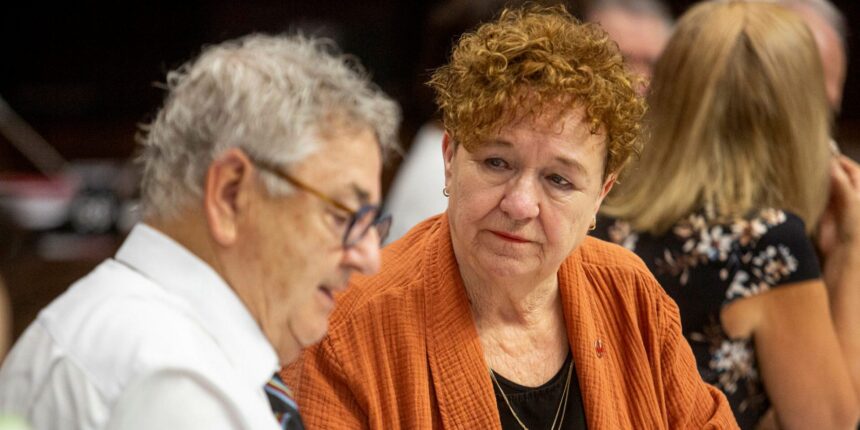The sterile hallways of Parliament witnessed a renewed fight for reproductive justice last Thursday as Senator Yvonne Boyer reintroduced legislation to criminalize forced and coerced sterilization practices in Canada. The bill, which previously died on the order paper during the last session, seeks to finally address a dark chapter in Canadian history that continues to unfold.
“Survivors are waiting for it,” Senator Boyer told me during an interview in her office overlooking the Ottawa River. “This isn’t ancient history—it’s happening right now in hospitals across the country.”
Boyer, the first Indigenous woman appointed to the Senate from Ontario, has spent years documenting cases where women—predominantly Indigenous—report being pressured into sterilization procedures during vulnerable moments, often while in labor or under duress.
My investigation into these claims revealed a disturbing pattern. Court documents from a class-action lawsuit in Saskatchewan show that at least 100 Indigenous women have come forward alleging they were sterilized without proper consent as recently as 2018. The lawsuit, filed with the Court of King’s Bench in Regina, contains testimonies describing medical staff pressuring women while they were in active labor or recovering from childbirth.
Dr. Karen Stote, whose research uncovered evidence of thousands of Indigenous women sterilized between 1920 and 1970, explained that these practices weren’t isolated incidents but part of systemic discrimination. “What we’re seeing today is the continuation of colonial policies dressed up in different language,” she said during our conversation at Wilfrid Laurier University, where she’s documented these histories extensively.
The proposed legislation would amend the Criminal Code to make it explicitly illegal to sterilize a person without their free, informed, and ongoing consent. Currently, prosecutors must rely on assault provisions that don’t address the specific nature of these violations.
Boyer’s bill has gained unexpected allies. Dr. Jennifer Blake, former CEO of the Society of Obstetricians and Gynecologists of Canada, expressed support for clearer legal frameworks. “Medical practitioners need unambiguous guidelines,” she explained during a phone interview. “There’s confusion about when consent is truly informed, particularly in high-stress situations.”
I obtained internal documents from Health Canada through access to information requests showing that federal officials have been tracking these allegations since at least 2017, yet no comprehensive national investigation has been launched. The documents, which included heavily redacted briefing notes, acknowledge “reported incidents in multiple provinces” but stop short of recommending federal action.
The UN Committee Against Torture has condemned these practices in Canada, calling for legislative prohibition and reparations for survivors. Their 2018 report described the ongoing sterilizations as cruel and inhumane treatment, placing international pressure on the Canadian government.
Senator Boyer’s previous bill faced procedural obstacles rather than substantive opposition, but the path forward remains uncertain. Conservative Senator Don Plett questioned whether new criminal provisions are necessary, suggesting existing assault laws suffice. Liberal Senator Mobina Jaffer countered this perspective during committee hearings I attended in March.
“These are not simple assault cases,” Jaffer argued. “They represent the destruction of reproductive capacity and cultural continuity, often targeted at specific communities.”
For survivors, the distinction matters deeply. I met with Morningstar Mercredi, an Indigenous author who was sterilized without consent as a teenager. “This was more than what happened to my body,” she told me over coffee in Edmonton. “It was an attack on my identity as an Indigenous woman, on my community’s future.”
The bill has implications beyond Indigenous communities. Disability rights advocates have documented cases of intellectually disabled women being sterilized through substitute decision-making processes that fail to center their autonomy.
Lawyer Roxanne Mykitiuk from the Disability Rights Research Institute explained, “Women with disabilities face a double discrimination when it comes to reproductive autonomy. This legislation could establish clearer protections.”
Provincial responses have been uneven. In 2019, I reviewed medical directives issued by provincial health authorities following media attention to these cases. While British Columbia and Alberta introduced explicit consent protocols for sterilization procedures, other provinces made minimal adjustments to existing policies.
The Canadian Medical Association Journal published findings last year indicating significant gaps in medical education regarding informed consent, particularly in cross-cultural contexts. Their study surveyed medical residents across Canada, revealing that only 23 percent felt adequately prepared to ensure informed consent with patients from different cultural backgrounds.
As the bill moves through Senate readings, survivors watch with cautious optimism. During a demonstration on Parliament Hill that I covered last month, women held signs reading “Never Again” and “Justice Delayed Is Justice Denied.” Many had traveled from remote communities to make their voices heard.
Senator Boyer remains determined despite potential challenges ahead. “This isn’t about politics,” she emphasized as our interview concluded. “It’s about acknowledging harm and creating safeguards to prevent it from continuing.”
The legislation faces a series of hurdles before potentially becoming law. It must pass three readings in the Senate, navigate committee scrutiny, then repeat the process in the House of Commons. With a possible election on the horizon, time pressures add another layer of uncertainty.
For those awaiting justice, however, each delay extends generations of trauma. As Mercredi put it before I left our meeting: “How many more women will lose their reproductive rights while Parliament debates whether that loss deserves its own name in law?”






